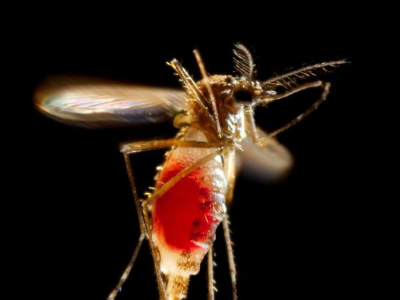May 14, 2004 (CIDRAP News) – The Centers for Disease Control and Prevention (CDC) yesterday announced a reorganization plan designed to hone the agency's ability to respond to public health threats, including terrorism, as well as chronic health problems.
"Basically what this is all about is leveraging our resources at CDC to allow us greater flexibility in responding to public health threats and chronic health conditions," spokesman Tom Skinner told CIDRAP News.
The plan calls for grouping about a dozen existing CDC centers into four "coordinating centers" focusing on infectious diseases, health promotion, environmental and occupational health, and health information and services. The agency intends to implement the plan by Oct 1, the start of fiscal year 2005.
The CDC said the plan, developed over the last year, is guided by the two overarching goals of (1) preparedness for infectious, environmental, and terrorist threats; and (2) health promotion and prevention of disease, injury, and disability. The agency says it hopes to increase its measurable impact on health and become more "customer-centric."
Skinner said the plan has been influenced by the CDC's experience in dealing with SARS (severe acute respiratory syndrome) and the monkeypox outbreak last year. "When we responded to SARS and monkeypox, we pulled resources from across the agency to respond, and we had tremendous success in responding," he said. "What we're doing is taking those principles of pulling resources from across all the centers that make up the CDC and working toward common goals."
Skinner cited infant health as an example of a field in which the reorganization is expected to enhance the CDC's contributions. "We have numerous experts that work on infant health issues, such as immunization, nutrition, birth defects and developmental disabilities . . . but all of the experts and resources are scattered throughout CDC," he said. "So we're trying to pool all of the experts and resources that may be able to impact infant health and work together synergistically to have a greater impact than what we have now."
Skinner said no jobs will be sacrificed as a result of the organization, nor will the changes affect "the way Congress allocates us money." A report by the Atlanta Journal-Constitution said the restructuring cuts the number of people reporting directly to CDC Director Julie Gerberding from 28 to 13.
The CDC listed the four new coordinating centers and their directors as follows:
- Coordinating Center for Infectious Diseases, Dr. Mitchell Cohen. The center will include the National Center for Infectious Diseases, the National Immunization Program, and the National Center for STD, TB, and HIV Prevention.
- Coordinating Center for Health Promotion, Dr. Donna Stroup. The center will include the National Center for Chronic Disease Prevention and Health Promotion and the National Center for Birth Defects and Developmental Disabilities.
- Coordinating Center for Environmental Health, Injury Prevention, and Occupational Health, Dr. Henry Falk. This includes the National Center for Environmental Health, the Agency for Toxic Substances and Disease Registry, the National Center for Injury Prevention and Control, and the National Institute for Occupational Safety and Health.
- Coordinating Center for Health Information and Services, Dr. James Marks. This includes the National Center for Health Statistics, a new National Center for Health Marketing, and a new Center for Public Health Informatics.
The heads of the coordinating centers will report directly to the CDC director. Also reporting directly to the director will be Dr. Stephen Blount, head of the Office of Global Health, and Charles Schable, head of the Office of Terrorism Preparedness and Response. Schable is replacing Dr. Joseph Henderson, who is leaving the CDC, according to Skinner.
The CDC said seven other officials will be within the office of the director. They include:
- Dr. Stephen Thacker, head of a new Human Capital Management Office, which will oversee professional development, recruitment, and training
- Dr. Dixie Snider, chief officer for science, who will oversee the Office of Extramural Research
- Dr. Ed Thompson, chief of public health improvement, who will work to ensure that the public health system meets CDC standards
- Kathy Cahill, head of a new Office of Strategy and Innovation
- William Gimson, who will remain the chief operating officer, in charge of management and business operations
- Robert Delaney, who remains chief of staff in the director's office.
Skinner said the functions of the existing Epidemiology Program Office and the Public Health Practice Program Office will be dispersed among the new coordinating offices. "The functions of those offices are going to continue within the new organizational structure," he said.
See also:
May 13 CDC announcement
http://www.cdc.gov/media/pressrel/r040513.htm
Links to additional CDC statements related to the reorganization
http://www.cdc.gov/futures/


















